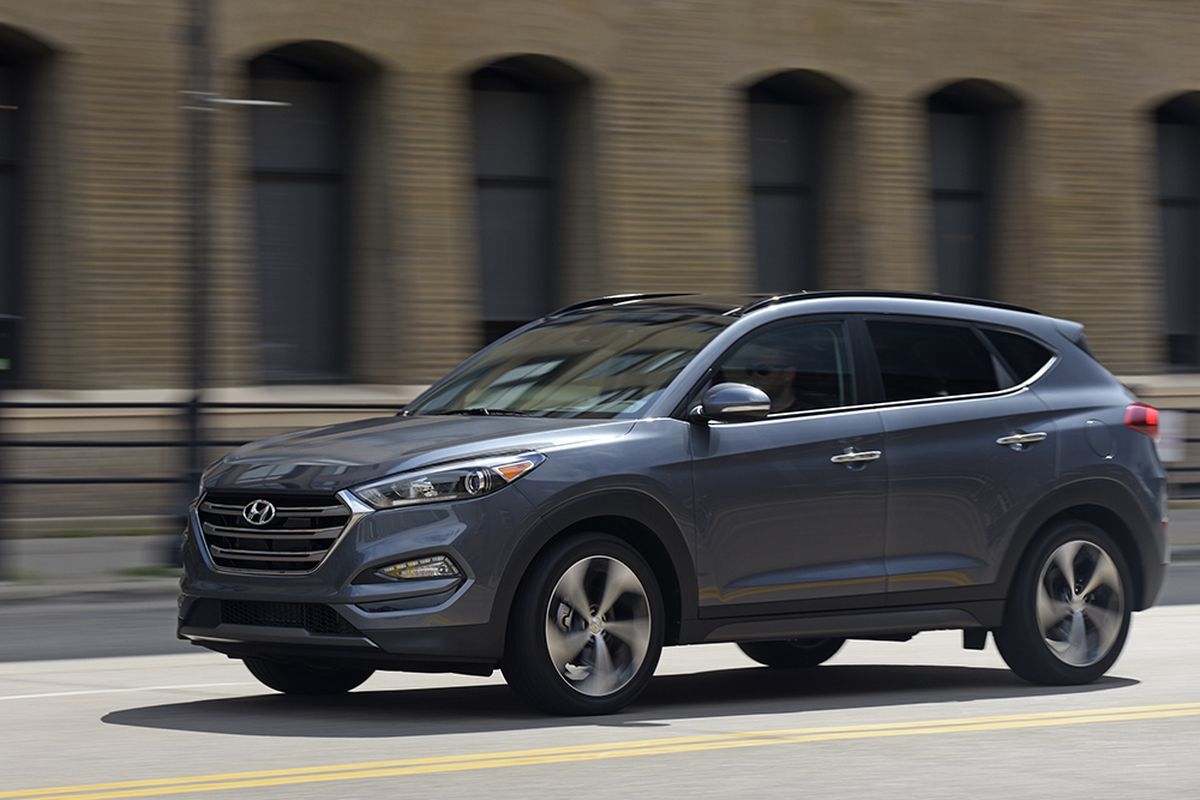Hyundai Tucson: Catching up with the competition — and then some

Hyundai was one of three companies whose U.S. market share grew during the recession. Its fortunes have faltered since, however.
Its failing? Too many cars, not enough crossovers.
The compact crossover is the industry’s hot number. Segment sales are up 19 percent — mostly at the expense of sedans. Hyundai, whose stylish and affordable sedans ruled during the recession, wasn’t ready for the surge.
Its compact crossover, the Tucson, never stood out from the crowd. Even if it had, production constraints would have curtailed sales.
But this is the year Hyundai rights the ship. A made-over, third-generation 2016 Tucson ($23,595, including transportation) lands this month, and production capacities are doubled.
At a recent press preview, the new Tucson proved night-and-day better than the car it replaces. It’s larger, roomier, quieter and more sophisticated. Its engines are more efficient and its redesigned suspension balances ride comfort with body control.
Lightweight high-strength steel comprises more than 50 percent of the Tucson’s body structure (up from 18), boosting rigidity a remarkable 48 percent. Chassis improvements contribute to improved suspension tuning and reduce noise, vibration and harshness.
Hyundai says the Tucson’s cabin is the segment’s quietest. Our test on mixed surfaces — freeway, two-lane asphalt, city streets and gravel road — seemed to bear that out. Underway, the Tucson conveys a sense of competence, quietly rendered.
Hyundai pays attention to the little things that give a car stand-out qualities. Switchgear works with a new heft this year. Re-engineered door-latch mechanisms operate with less noise, pull-resistance and internal friction. Thanks to increased damping, they close with a big-car assurance.
A 5-inch color LCD touchscreen and rearview camera are standard and Apple’s Siri “Eyes Free” integration is available. Tucsons equipped with navigation fetch an 8-inch screen and the expected third-party apps.
A new engine option — a 167-hp turbocharged and direct-injected 1.6-liter four — pairs with a dual-clutch automated transmission to top the highway mileage of last year’s top trims by as much as 5 mpg.
The all-new seven-speed gearbox enhances both efficiency and acceleration. It makes quick and smooth shifts, with no hint of the “shock shift” to which automated manuals are prone.
The base engine, a 2.0-liter 164-hp direct-injected four, carries over from last year, but with a one-mpg gain in overall efficiency. It’s available only with a six-speed automatic transmission.
Base price is up about $1,000, but Hyundai argues its value proposition remains intact. Such features as automatic headlights, heated outside mirrors, satellite radio and alloy wheels are standard on the base SE, but either optional or not available on competitors’ base trims.
New safety measures, both standard and optional, align the Tucson with market expectations. Most notably, a new Lane Change Assist system measures the closing speed of a vehicle approaching from behind. If it’s closing too quickly the system will warn against changing lanes. I.e., no more inadvertent near misses as two drivers attempt to move into the same lane at the same time.
Playing catch-up in a rapidly evolving segment, Hyundai has produced a rig good enough to play with the class leaders. Welcome to the game.
2016 Hyundai Tucson Limited FWD
Price range: $23,595-$35,000 (approx.)
Tow rating: to 1,500 pounds
EPA ratings: 27 combined/25 city/30 highway
(1.6-liter engine/FWD)
Regular unleaded fuel specified
